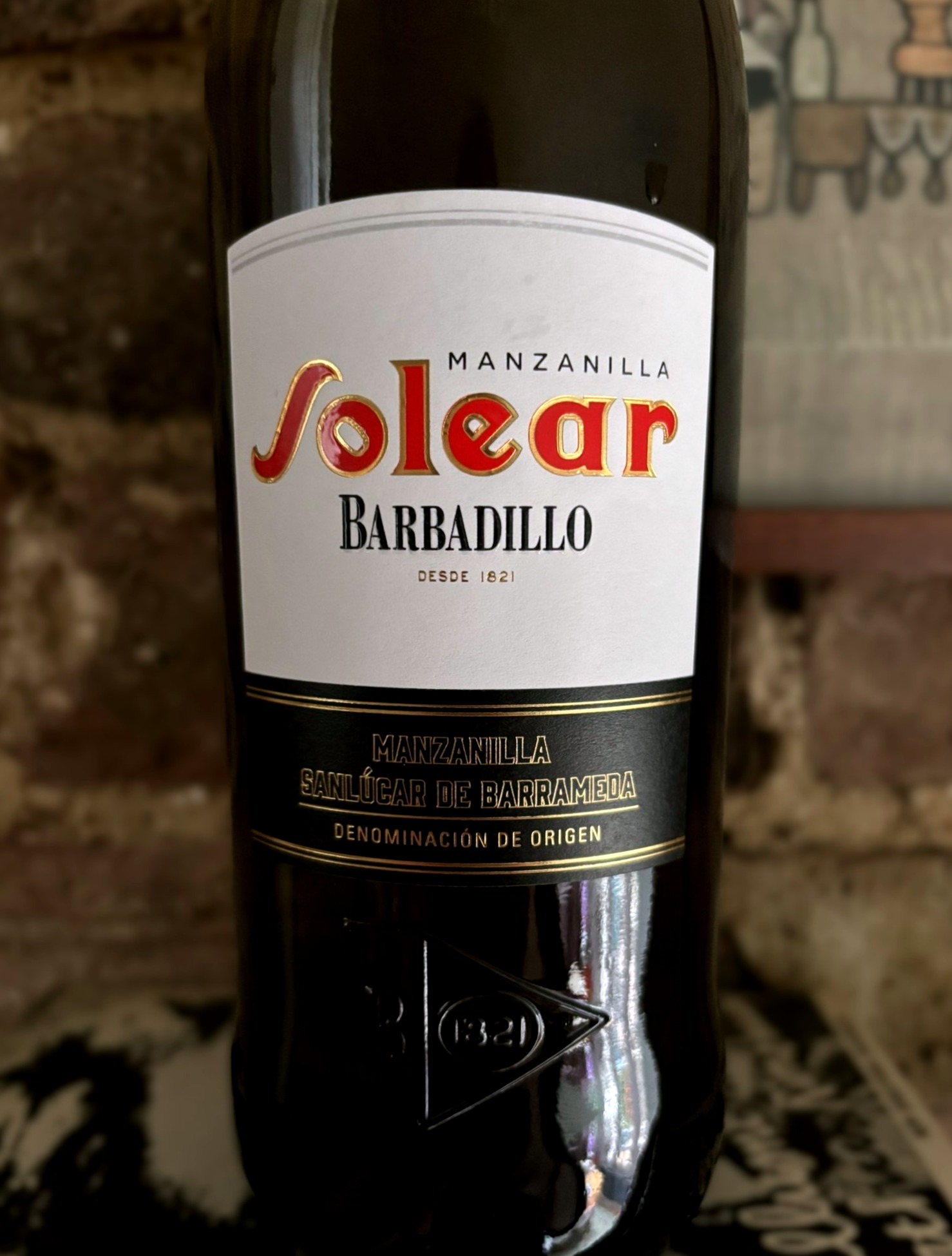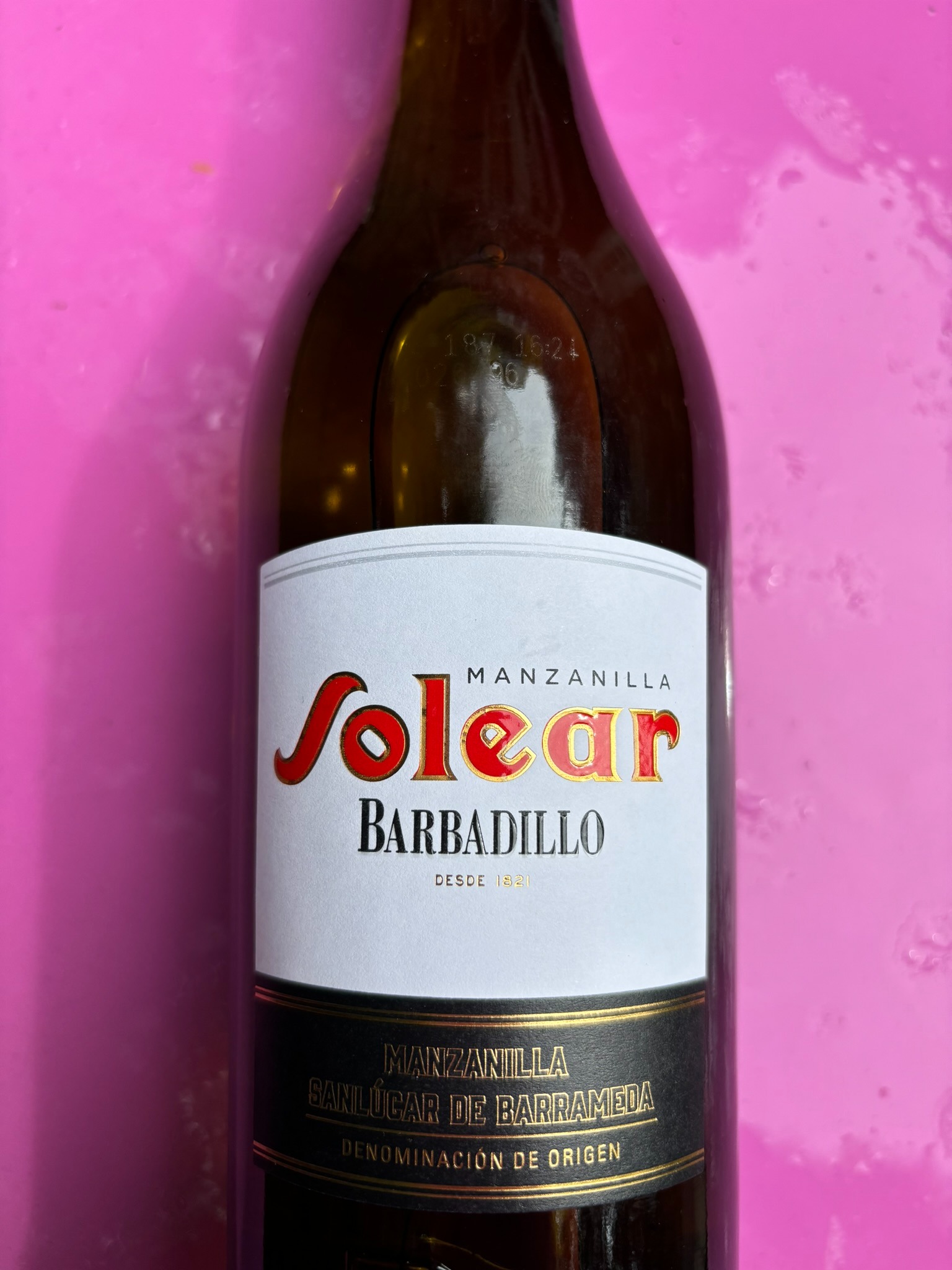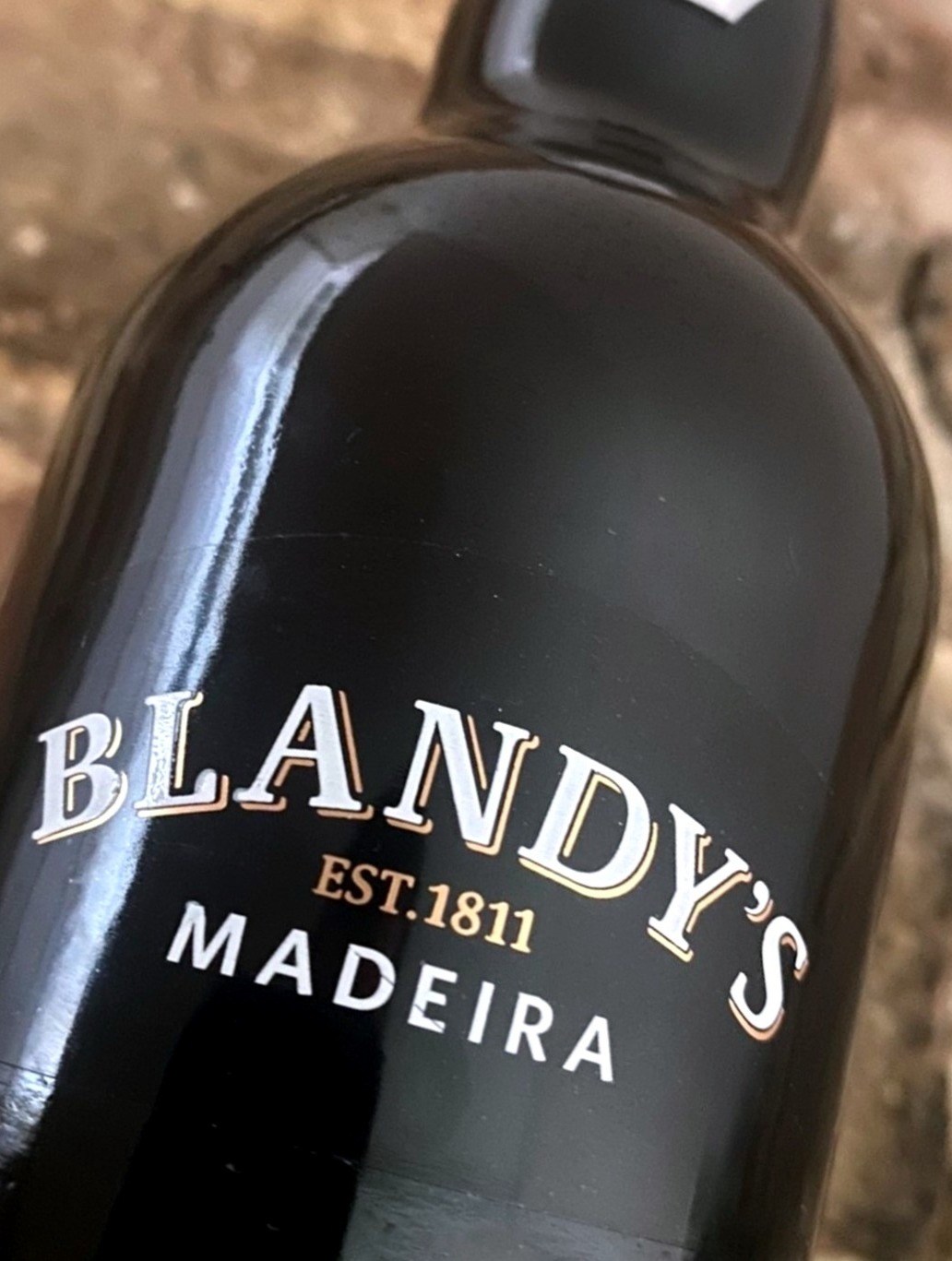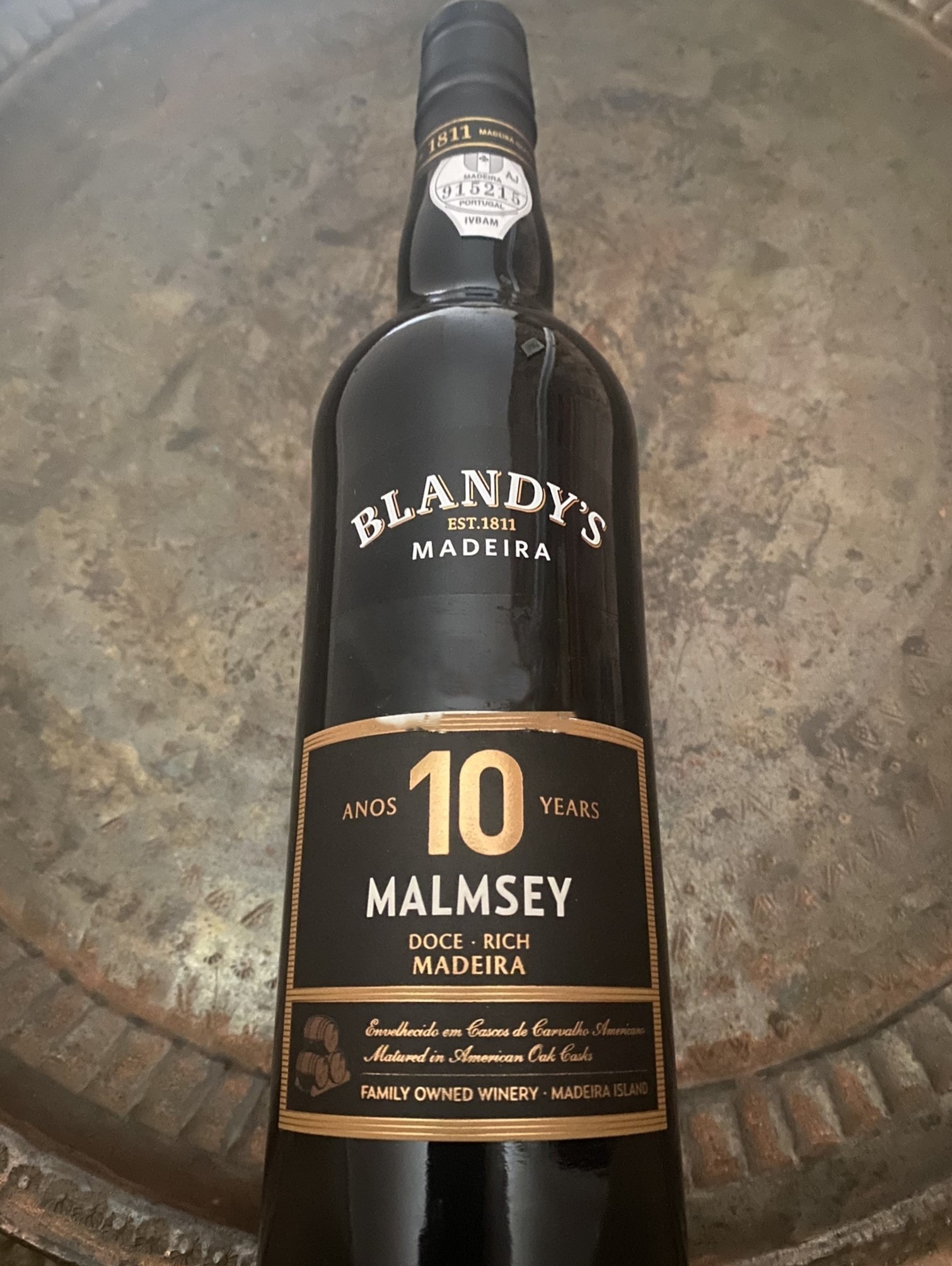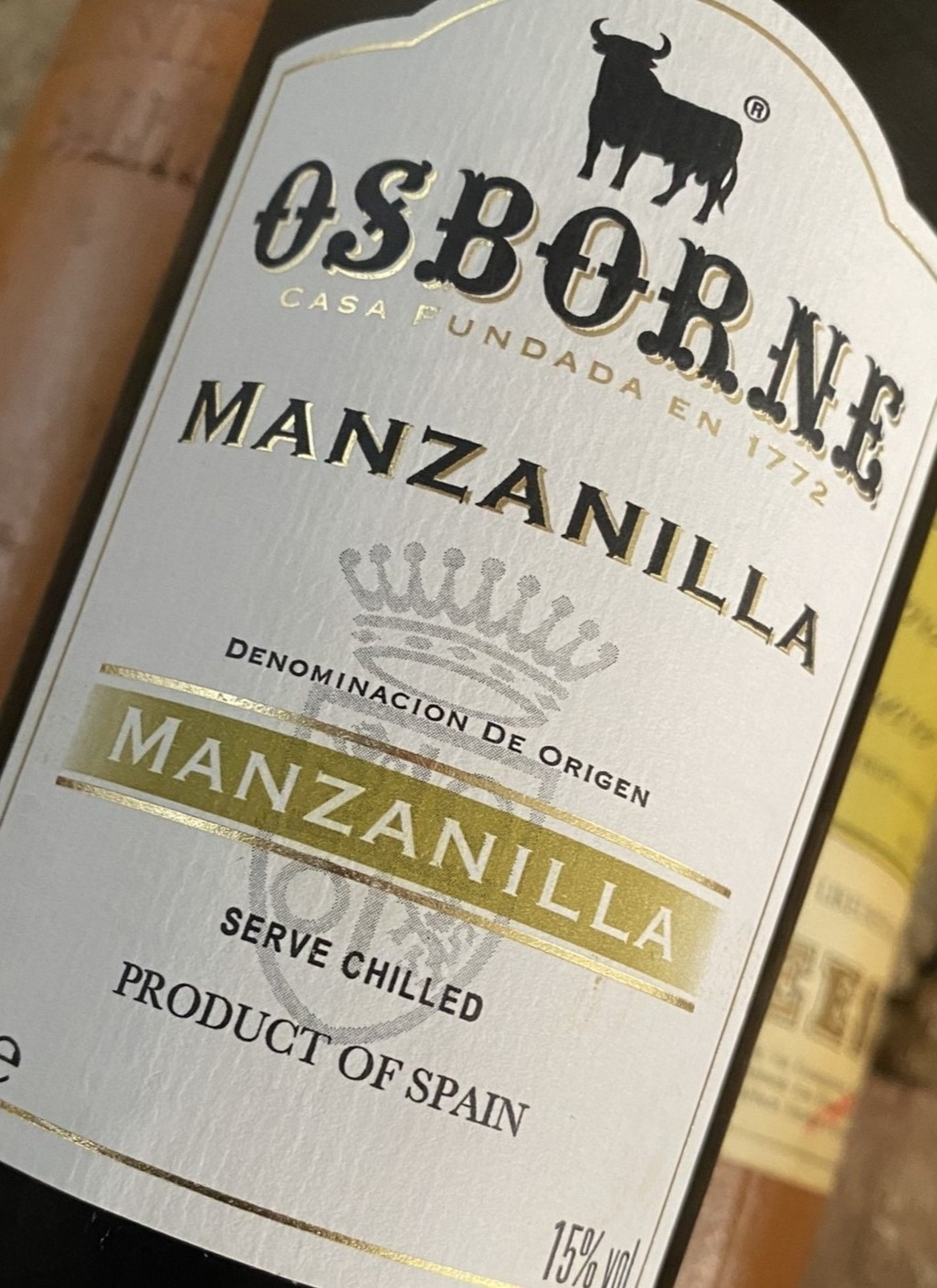

Bodegas Barbadillo has been making wine since 1954, although its history dates back to the nineteenth century when its founders emigrated from Mexico to the famous town of Sanlúcar de Barrameda in Andalucía. Wine Spectator Magazine included their Solear Manzanilla in the top 100 wines of 2014 (at #95) an honour of which they are justly proud. It has, according to the producers, one of the longest ageing processes of any Manzanilla out there.
And you can taste it. Manzanilla is often more delicate than its Fino cousin due to the distinctive varieties of flor that thrive in the coastal town and this is no exception. But here, delicacy certainly isn't at the expense of complexity or depth. Beneath the wonderful filigree quality, finely wrought and animating, there is a surging power that breaks on the tongue in waves of salty freshness. It makes for an aperitif of considerable quality, as perfect for pre-prandial sipping in restaurants in Battersea as for contemplative tapas in southern Spain's tabacanos.
In the glass, it is crystal-clear lemon tinged with green at the gills. This clarity carries through on the nose with light but powerful aromas of green almonds and fresh hay. Fewer of the bruised-apple notes of a typical Fino, it is more savoury, almost allium in its verdant fragrance. It is this salinity that is perhaps its most immediate quality: sea spray on volcanic rocks and the twisting of kelp forests on the tongue that means it remains refreshing despite the typically lower acidity of the Palomino varietal.
All these elements make it an excellent aperitif that can also carry through into the meal. Perfect with savoury foods, it calls out for pescaito frito, jamón ibérico, garlic, olive oil – all the good things from that part of the world. Its flavour profile is ripe for chilli and sweet spice, too, the aromas of the Arabic world carried on the hot sirocco wind to the mouth of the might Guadalquivir.
Of all the sherry styles, Palo Cortado is the least common and the least understood. In a binary world of biologically aged vs oxidatively aged sherries, Palo Cortado is a misfit. Typically starting life as a Fino and therefore subject to yeast influence from a layer of flor, it is later re-classified as potentially too full-bodied and deeply flavoured for the light and ephemeral profiles of Finos and Manzanillas. The wine then enters its own Palo Cortado solera system where it is aged under the influence of oxygen. The range of aromas and flavours in the finished wine therefore combines those characteristic of biologically aged and oxidatively aged sherries. It shares this dual ageing process with Amontillado, but Palo Cortado often has a more intense flavour akin to an Oloroso, with less of the acetaldehyde tang from its biological origins. It is also often deeper in colour, fuller of body and smoother (it usually has more glycerol remaining due to shorter periods of exposure to flor).
This wine is part of a small range of Pedro’s Almacenista Selection sherries (there’s a Fino, an Amontillado, an Oloroso and a PX too). All have delightful labels featuring local poster art. “Almacenista” is the Spanish term for typically smaller Bodegas that age wines before selling them on to the larger shipping companies to market the finished wines. In this case, the wine is sourced from an “old established Almacenista in Jerez” we are told (from the cellars of Cayetano del Pino, I understand, who are somewhat experts in this style of sherry). The range is reasonably easy to source, too (from Waitrose and Majestic, for example, as well as specialists like Spanish Wines Online).
A pure amber colour in the glass, the first impressions on the nose come from the acetaldehyde-related aromas of biological ageing – apple skin, hay, nuts and an intriguing yeast-derived dairy quality that reads here as ghee or clarified, slightly fermented butter. These aromas are more subtle however than in Pedro’s equivalent Amontillado and are followed almost immediately by a brown warmth from oxidative ageing – aromas of caramel, walnut, pecan nut and maple syrup. This broad, mahoganied character underpinned by the fresh saline hit from the flor gives an unusually complex, deep but refreshing profile.
The wine is certainly fuller bodied and has more glycerol weight than wholly or predominately biological-aged sherries. Because glycerol registers as slightly sweet in the mouth, there is also a ghost of sweetness beneath its dry, salty profile. This latter saline quality is quite marked on the palate and makes for a very interesting interplay with the coffee-and-walnut flavours the wine inherits from its Oloroso cousins. There’s also a nod towards the latter’s dried fruit, albeit much less intense. The ABV here is 20% and the alcohol is definitely more present on the nose. Consequently, it's a tad more rustic than its more elegant Amontillado compadre. The finish is long, however, with tones of smoked salt, tobacco and leather.
The intense profile means that the wine can stand up to the aged sheep’s milk cheeses of Castilla–La Mancha (just north of Andalucía) – Manchego etc. The acorn-like nuttiness of Iberico pork is also a perfect partner, slices of lomo de cerdo or jamón serrano. Try with croquetas de jamón serrano that adds the pillowy silk and bland hug of bechamel, and the crunch of breadcrumbs for a good textural fit.
All these elements make it an excellent aperitif that can also carry through into the meal. Perfect with savoury foods, it calls out for pescaito frito, jamón ibérico, garlic, olive oil – all the good things from that part of the world. Its flavour profile is ripe for chilli and sweet spice, too, the aromas of the Arabic world carried on the hot sirocco wind to the mouth of the might Guadalquivir.
Founded in 1811, the family-owned and run Blandy’s is one of the oldest and most respected producers on the island of Madeira. The island, technically an autonomous region of Portugal, is situated in the Atlantic ocean to the west of Morocco and is famous for the fortified wines that bear its name. The wines are made from a number of varieties: Malmsey, also known as Malvaisa, is perhaps the most famous of the noble white varieties used and typically grows in the cooler, wetter north of the island. Once harvested, the grapes are fermented using natural, ambient yeasts in temperature-controlled tanks and then fortified to stop further fermentation at the desired level of sweetness. This particular wine is categorised as “Doce” or rich, the highest of the sweetness levels. It contains 123 g/l of residual sugar (to put that in context, table wines can have up to 4 g/l to qualify as “dry” according to the EU, whereas PX sherry can have between 400-500 g/l).
Post fortification, the wine is aged in small oak casks in the traditional “Canteiro” system used for higher quality wines. This process, peculiar to the island, sees the wine kept in a hot, humid and oxidative environment that produces the characteristic deep colour and concentrated flavours. In addition, sugars in the wine caramelise during the process which, in the best wines, is matched and balanced by fresh acidity - all adding to the extraordinary profile on display. Age-indicated Madeiras come in 15, 20, 30, 40, 50 and “> 50” years old in addition to 10s and younger 5 year olds. All are bottled ready for drinking so no use buying a 5 year old and waiting – it’s not the bottle environment that’s key to development (unlike Vintage port that’s quite happy maturing at the back of your cellar).
A beautiful bronzed amber colour, the predominant aromas here are dried fruits (raisins, prunes, dates and apricot) together with marmalade tones – a relatively light burnt-sugar marmalade like Fortnum and Mason’s Sir Nigel's as opposed to their citrus-forward Burlington Breakfast. There’s a distinct nuttiness too – waxy Brazils and walnuts – that works very nicely with the caramel undertones. There’s also an elusive fragrance, something like basmati rice.
The palate is less showy, with floral notes under the predominant fruit ‘n nut. It’s a full-bodied wine, with a certain oily weight to it, but its conspicuously high acidity balances this richness. There’s a little texture here too, more so that say a smooth and unctuous PX sherry. The finish is complex and long, evolving across the mouth for quite some time. It resolves first into barley sugar warmth and then into a, not unpleasant, vegetal note that most closely resembles celeriac (a light, green, earthy liquorice). There’s a little dry note at the very end that makes a surprising and welcome palate restorer.
This is one of a few wines that can stand up to the onslaught of the Christmas pudding/mince pie brigade (cf my Great Christmas Pud Conundrum for Falstaff). But it would be a shame to save it only for Yuletide: it also goes well with chocolate-based puds, fruit cakes and cheese, especially blues and those with a nutty profile like aged Alpines.
The fortified white wines of DO Manzanilla – Sanlúcar de Barrameda are matured around the Atlantic port of Sanlúcar de Barrameda in Andalucía. The proximity to the ocean acts to temper the extremes of heat in this part of southern Spain and adds to the humidity in the Bodegas in which the wines are stored. This provides an ideal environment of the production of this unusual, biologically aged wine. Like its more famous cousin, Fino, Manzanilla is matured under a layer of yeast cells known as flor. This layer protects the wine from oxygen and results in a unique array of aromas from the acetaldehyde that the flor gives off as it slowly consumes the alcohol and glycerol in the wine. This results in a dry, light-bodied sherry with a complex range of aromas, typically including bruised apple, hay and nuts. A distinct salty tang is also part of the wine’s typical profile, a style that makes Manzanilla a particular favourite in Andalucía’s tabacanos (sherry bars).
Bodegas Osborne is based in the nearby sherry town of El Puerto de Santa María (it’s the third corner of the “Sherry Triangle”, with Sanlúcar and Jerez). Founded by Englishman Thomas Osborne Mann nearly 250 years ago, the company’s bottles are immediately recognisable from the iconic Osborne bull. The logo, designed in 1956, has also sired a number (92 at the last count) of large bull-shaped billboards dotted around the Spanish countryside, making the company one of the best known nationally (they also produce brandy, hams and caviar).
The wine is the palest of straw colours, belying the intensity of its profile. Palomino Fino, the grape from which all dry sherries are produced, is not a particularly aromatic grape. Once the wine has been through its extensive blending and maturation process, very little fruitiness remains – a residual waft of lemon at most. Instead, the ravishing aromas created by biological ageing come to the fore: fragrant almond and the slightly waxy musk of brazil nut, the tell-tale scent of bruised apple and an intense, saline brininess. Beneath these high notes, you can also detect an interesting fresh dairy quality from the action of the yeast – yoghurty, almost cheesy. The palate is more restrained than the nose and there is a little more weight in the mouth than some biologically aged sherries. It is, nevertheless, elegant and fresh on the palate with plenty of the acetaldehyde rush that makes these sherries so intriguing. One for the hotter summer days, sipped languidly in the shade of an orange tree accompanied by a little pot of salted Marcona almonds and some Cante Jondo on the playlist.
Get to know more about fortified wine with my full-length articles.

